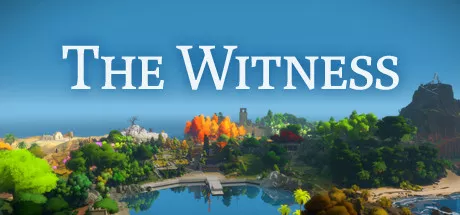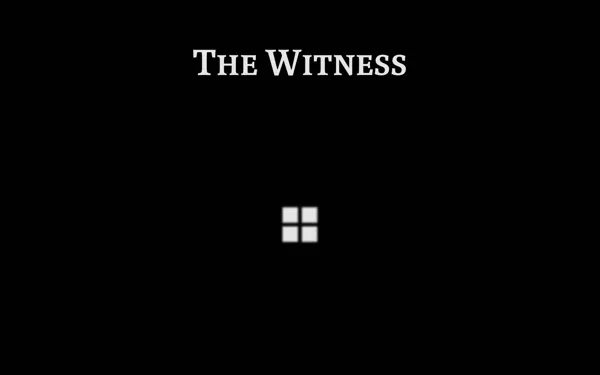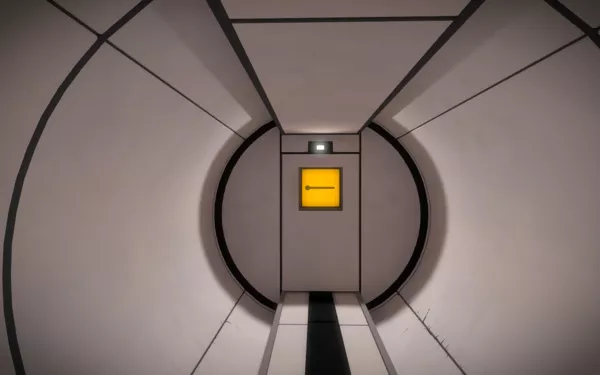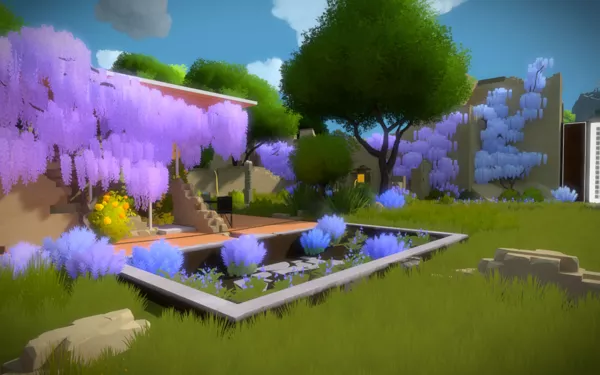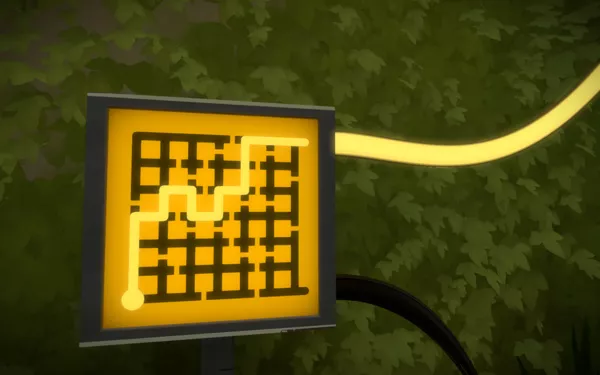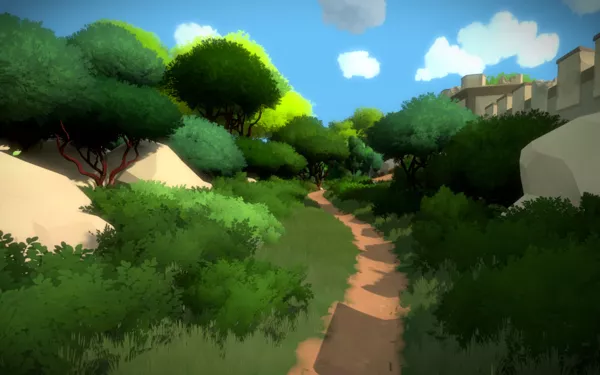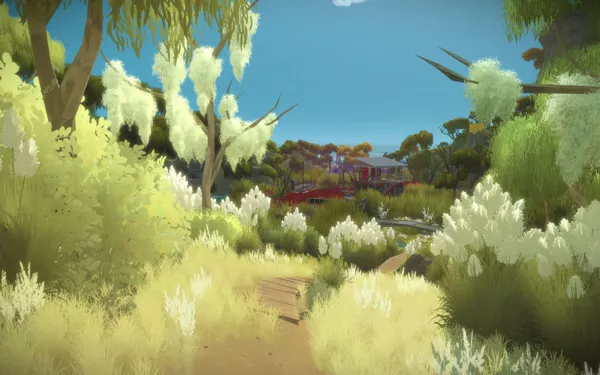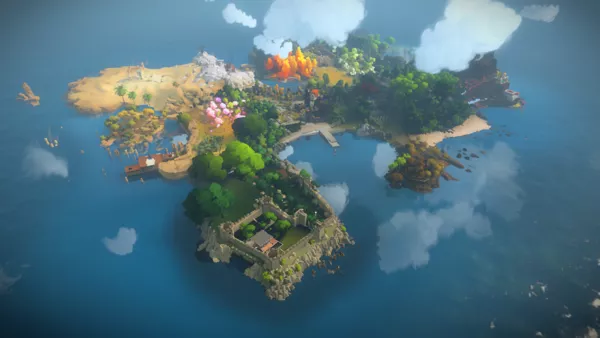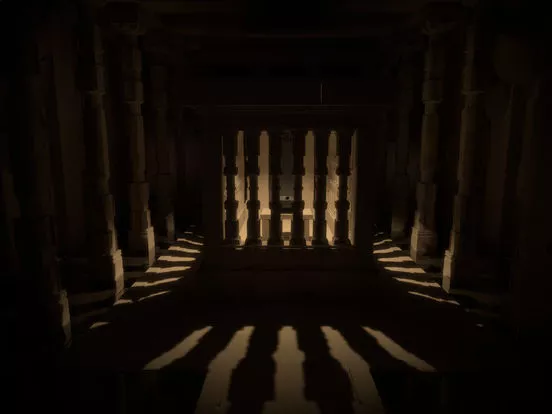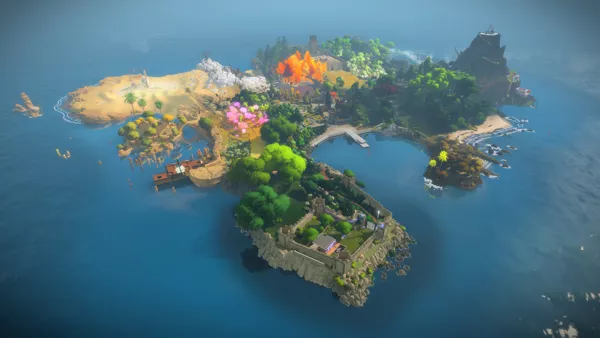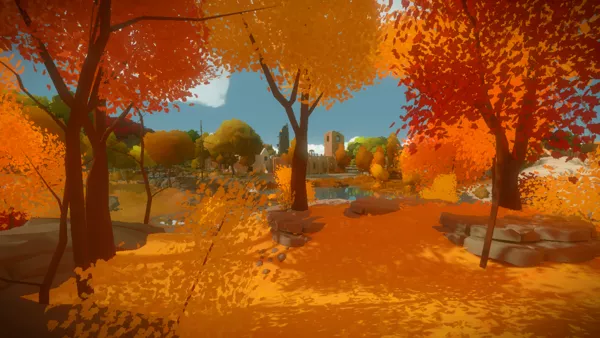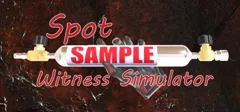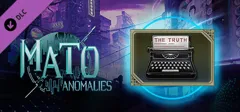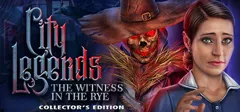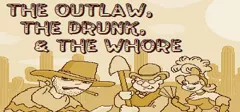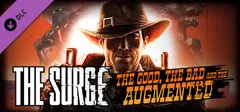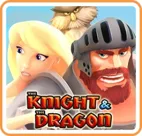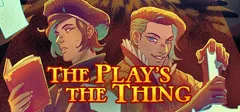The Witness
-
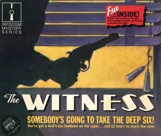 The Witness
(1983 on
PC Booter,
Commodore 64,
Apple II...)
The Witness
(1983 on
PC Booter,
Commodore 64,
Apple II...)
Description official description
The Witness is a first-person adventure game with a strong focus on puzzles and it is set on an abandoned island. It starts with an unnamed protagonist at the end of a tunnel. The exit leads to a large, uninhabited island with various modern structures. Almost immediately the island can be explored entirely and in any direction without restrictions. The small story elements are revealed indirectly, but the main goal is to regain memory and find a way off the island. Clues can often be found through elements in the environment and there are also some audio segments, usually with quotes from very different contexts, that can be found through left behind audio logs.
The main focus is the exploration of the island and solving more than 500 puzzles in different forms. No guidance or help is provided and the player has to figure out the mechanics through trial and error, logic or careful observation. The puzzle mode is accessed through a click or button, allowing the character to interact with electronic panels in the environment that usually represent a single puzzle. Most of these puzzles have a maze-like structure with a starting point and an end. A puzzle is solved by connecting start and end in a specific way. This often activates power, through cables, opening up a part of the environment or activating another panel. Through small effects or by following the cables, the effect can be traced. The general concept of the puzzles is largely the same for all of them, but many variants are introduced, such as separating maze items in a certain way, taking into account tetromino shapes, using colours and so on.
There are often panels in areas that gradually introduce new elements, but the player can still tackle them generally in any order. A large amount of puzzles cannot be solved through logic alone, but requires more thorough observation of the environment, similar to the Myst games. Some patterns can only be found on other locations or require the manipulation of parts in the environment that are not obvious. The puzzle mode can be accessed at any moment and this is often used in very different ways, but still according to the concept of the panels. Next to walking on foot, a boat is discovered soon to circle the island and get around quicker.
Groups +
Screenshots
Promos
Videos
Add Trailer or Gameplay Video +1 point
See any errors or missing info for this game?
You can submit a correction, contribute trivia, add to a game group, add a related site or alternate title.
Credits (Windows version)
64 People (58 developers, 6 thanks) · View all
| Architecture |
|
| Audio by |
|
| Design | |
| Generally Steering the Ship | |
| Programming | |
| Modeling and Texturing | |
| Additional contributions in modeling by | |
| [ full credits ] | |
Reviews
Critics
Average score: 86% (based on 22 ratings)
Players
Average score: 3.8 out of 5 (based on 42 ratings with 1 reviews)
Puzzle after puzzle after puzzle
The Good
"The Witness" is supposed to be an exploration game, but it feels more like a huge puzzle game. I wouldn't call it an adventure game. There are no items to carry, no people to meet, the island is deserted and the only way in which you interact with the environment is by solving endless series of logic puzzles. However, it certainly has a strong exploration element too. As I mentioned, it's set on an abandoned island and the variety of places is breathtaking. Here are just a few of the areas visited: archeological dig of an ancient temple, quarry, a shipwreck, a greenhouse, the autumn forest (it looks like it's perpetual autumn in this area, even though other areas may rather look like summer or spring), a swamp, a system of treehouses... What comes with this variety is, of course, graphics: I usually don't like 3D environments, but here the game world is amazing. And the sheer diversity is enough to draw players to this game.
While there are aspects of the puzzle concentration I dislike, it can be generally said that, at least in the beginning, the game gradually introduces you to new types of puzzles. As I mentioned, it's an inventory-less game. You don't carry any items, you don't, for example, find a crystal in one area to use it elsewhere... No, you only walk around the area (mouse for turning, cursor keys for walking, Shift key to move faster) and solve puzzles (mouse). Changes to the environment are only made by solving puzzles and so in the very first room you are introduced to the simplest possible design - not yet a puzzle, but a mechanic which will be repeated in all puzzles (with one small exception, perhaps - more about it later): click on a circle and draw a line to the rounded end. This opens a door and, once you get outside, you get the first real puzzles: simple mazes where you have to identify a path from the starting point to the end point and draw it just like the straight line earlier. Once you leave the starting place (which looks like an old fortress that has been changed into a resting area, with sofas, cushions, a garden...), new types of puzzles are introduced: the first two are a type where the path drawn on a panel must separate black and white dots and one where the path has to "collect" small dots. Later there are many different types of puzzles, gradually encountered as you make you way through the game.
Because of the recurrent puzzle mechanics - always drawing a line from a starting circle to a rounded end - it becomes easy to notice the same pattern in places other than puzzle panels. And these are indeed puzzles - a whole different set of puzzles, known as "environmental puzzles" - parts of the environment aligned in a way which creates the same pattern of a starting circle and path to a rounded end. I like this idea because, honestly: this is what makes the game replayable. I wouldn't bother replaying it if not for the possibility of finding as many environmental puzzles as possible.
However, some can be devilish hard to find - even if you use some, well, "external help". Fortunately, the game gives you little hints, but you have to realize it. Here's how it works: there are six black obelisks in various places and some environmental puzzles which are more or less close are "assigned" to each one. After you a) find and trace one of the (most likely easier) environmental puzzles in the area, b) find the corresponding obelisk, you can see that gray outlines of shapes have appeared on the surface. These are all the environmental puzzles for that obelisk and it makes looking for them slightly easier - you know what you're looking for. Each found environmental puzzle will light up gold on the obelisk surface and, if you find every single puzzle for an obelisk, it will change from black to whitish (with outlines now visible again in gray, not gold).
But anyway, it remains hard - but in this case I quite liked the challenge. An easy example: if you look at the bay next to the town from some rocks close to the starting area, there is a black line above the water which looks just like the thing. A very hard to find example: a few clouds which create a line when seen from one point (extra difficulty is added by the fact that one of the clouds is gray, not white and an environmental puzzle must always have the same color all over - or, at the very most, gradually change color along the path. In this case, the cloud changes to white if it's hit by a laser and there's just one laser which doesn't point in the right direction and needs to be reflected...) - finding the right spot by chance is unlikely, especially when you usually need to look around you, not up, to notice the ordinary puzzles. In some places you need to use a boat to see the puzzle from the correct angle - an example I could call "epic" is a green line of paint along the shipwreck. Long after the starting point is no longer visible, the end is finally in sight... So, altogether, the environmental puzzles are an idea which may leave you scratching your head in astonishment over some of the cleverly hidden clues.
The game also pushes you a bit towards the solution in case of regular puzzles. When you don't know what to solve next, the best idea is usually to follow a lit-up power line. And there is yet another, very subtle and hard to discover, way of hinting towards extra puzzles and secrets. If you look closely at the map on the boat, you will see that the lake between the town and autumn forest has the same shape as the whole island. Indeed it's a miniature of the island, with some objects, such as leaves or flowers, showing the location of some secrets.
While "The Witness" is generally demanding, sometimes it becomes less harsh on the player. The game's goal in general is to turn on lasers in different places (there are 11 of them) so that they point to the top of the mountain, open the entrance and make your way through even more puzzles inside. However, you don't need to activate all lasers (7 is enough), there are some optional puzzles in some areas, and in one place, the castle, you can actually choose one of two sets of puzzles. It's completely possible to solve both, but finishing one is enough to turn on the laser.
Apart from the environmental puzzles, there are also other secrets in the game. An example are the audio logs. No, they still don't give any insight about why you are on this island, but they are interesting to listen to. Most generally they seem to span between the mystical (such as quotes from the late medieval theologian and mystic Nicholas of Cusa) to the scientific (for example quotes from the physicist Richard Feynman), sometimes with a particularly strong link between both (such as a quote from Albert Einstein about the religious experience as an inspiration for scientific inquiry). Audio logs are usually very cleverly hidden, but the "lake map" offers rough hints.
Before I move on to criticize some aspects of the game which seem quite fiendish and just unfair, let me pay homage to some of the amazingly clever and ingenious puzzle designs.
- Near the end there is a series of panels with the first one being suspiciously simple... Each one is s different kind of puzzle (as usually, a panel lights up after the previous one is solved), but there is one solution which works for each one of them. You just need to identify it and then apply it to all panels by changing the previous answers.
- A puzzle subtype found in the greenhouse and later in the town (actually, you can get to the town very soon after starting the game, but, since it repeats many puzzle types found before, so a good idea is to solve it as the last area before the ending section): a colored stars puzzle with panels of colored glass nearby. The colors change when seen through glass and you have to figure out the "real" colors.
- The "life-size puzzle" on one side of the castle - there are panels in front of each one, but the starting point is missing... Instead you need to walk on the "life-sized" version - each panel you walk upon changes color and finally, if the right solution is used, triggering it will open the door to the next puzzle.
The Bad
Even though the game gradually leads players to more difficult puzzles - each new puzzle type starts with simple puzzles and works up towards more complicated ones - some are really hard and the most unfair thing is that you are given pretty much no instruction. Apart from the recordings, the game is non-verbal. So without any "external help" the real procedure with some more difficult types of puzzles rather goes like this:
- Attempt a solution.
- Some parts will flash, but it doesn't mean you will always easily realize what was done wrong.
- Figure out what was done wrong.
- Enter a new solution.
- Repeat over and over...
Examples: colored stars (which work completely different than colored dots), elimination mark.
To make matters even worse, in some places the puzzle panel fades if a wrong solution is entered - in such cases you need to go back to the previous one (which is not always just next to it, for example in the orchard it's not) and reenter the solution for that one.
Some puzzles are just unfairly difficult. For example some - mostly in the final section - are wrapped around pillars. This requires very good spatial/visual memory, something not all people have.
I wish game statistics could be accessed more easily. A bit of basics: the game saves progress automatically. If you try to restore a game, you can see its basic statistics given in brackets - the number of regular puzzles, environmental puzzles and full obelisks solved. According to a source, if every single puzzle is completed, the numbers will be: 523 regular puzzles, 135 environmental puzzles and 6 obelisks. But it isn't completely certain and I'd prefer the game to give access to data in percent - what percentage of puzzles is already solved.
The total lack of inventory feels unrealistic. After all, the player character is not some pure intelligence or whatever. Sometimes you can see his shadow (unfortunately, "his" - from the silhouette he seems quite clearly gendered as male), so you can assume that the player character is a normal human being. Yet he never carries any items... There is a special puzzle type in the desert temple (repeated once in the town): panels with the right solution delicately scratched on the surface, but only visible when a light shines on it from the correct angle. It may require strange operations such as raising and lowering the water level, tilting panels (of course, with the usual puzzle mechanic of drawing a line)... Well, really - a human being would have just looked for a flashlight and used it in the dark areas...
The Bottom Line
"The Witness" is a very particular game. It's certainly a very ambitious project (it's hard to imagine how they aligned all the little pieces for environmental puzzles and clues). A very large exploration game with countless bigger and smaller secrets. But it's also a game likely to disappoint players. After getting to know it well you may feel cheated in a way: it draws the player in, is even addictive, but later you may feel as if the story is never explained in any way. I don't want to delve deeper into it because it would be a spoiler, but this aspect may feel particularly disappointing.
Yet, trying all the different kinds of puzzles is interesting. And it would be even more interesting if the game included some more explanation about its mechanic and purpose...
It's hard to do this game justice. I feel like the very ambitious character of this project should be appreciated, but still it suffers from the "too much of the same" syndrome. Some players complained that the game "doesn't respect a player's time", "offers too little reward" beyond the mere feeling of satisfaction from having completed it - and I have to agree with them to a large extent. If I try to pinpoint the reasons for this relative failure - it seems that the game is (at least sometimes) too difficult and (most of the time) too monotonous. I feel like, for all the time spent on the game, it could have at least offered some explanation of the "plot": why is the player character on this island, who made all the puzzles...
Windows · by Nowhere Girl (8782) · 2017
Discussion
| Subject | By | Date |
|---|---|---|
| How tall is the mountain in the game? | Nowhere Girl (8782) | Feb 25, 2020 |
| The game loads once and doesn't run again | Nowhere Girl (8782) | Sep 14, 2017 |
Analytics
Identifiers +
Contribute
Are you familiar with this game? Help document and preserve this entry in video game history! If your contribution is approved, you will earn points and be credited as a contributor.
Contributors to this Entry
Game added by Sciere.
Macintosh added by jaXen.
Game added January 27, 2016. Last modified February 5, 2025.


